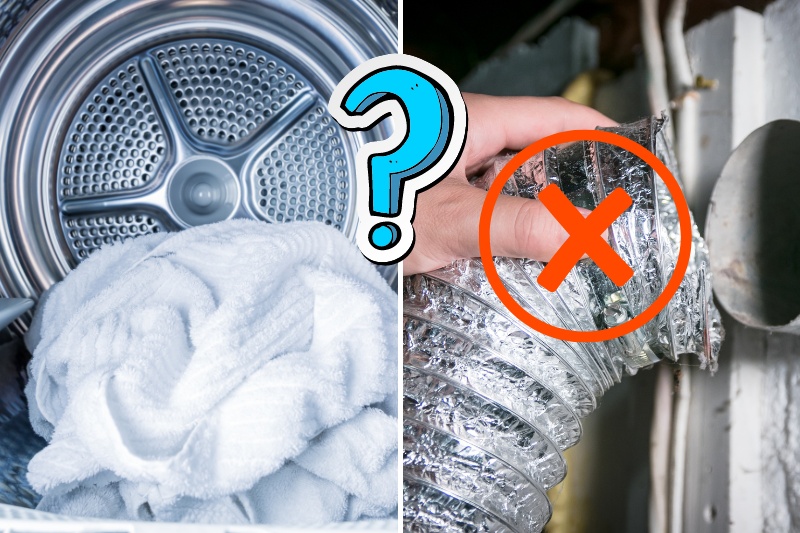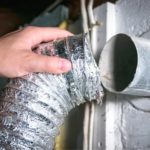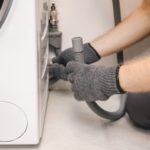Have you ever wondered if you can run your dryer without a vent hose? This is a common question for those looking to adapt their laundry setup or facing venting challenges.
Is it safe to run your dryer without a vent hose? Will it impact drying times? And is it even possible to do so?
In this article, we cut through the confusion and get straight to the facts. We explore the risks, safety concerns, and potential alternatives to using a vent hose with your dryer so that you can make informed decisions about your laundry setup.
So, let’s dive in and get to the bottom of this practical aspect of doing laundry.
Can You Use a Dryer Without a Vent Hose?
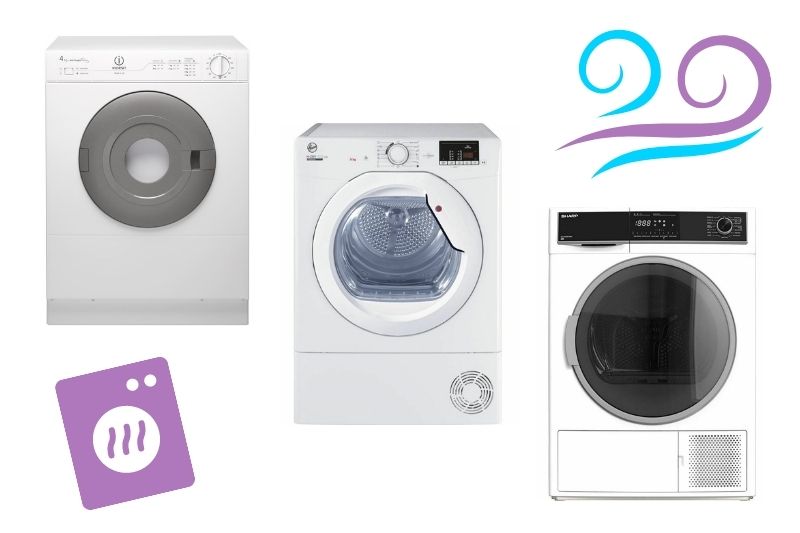
Whether you can run a dryer without a vent hose depends on the type of tumble dryer you have. There are two main types of dryers: condenser dryers and vented dryers.
- Condenser dryers: Condenser dryers do not need a vent hose. Rather than relying on a vented system, they use a heat exchanger to remove moisture from the air, which is then condensed into water. The water can be collected in a reservoir or drained directly. The same applies to heat pump dryers, which are essentially eco-friendly condenser dryers.
- Vented dryers: As the name suggests, vented dryers rely on a vent and vent hose to function. The vent hose expels the moist air and lint outside the home through a vent or exhaust opening, often located on an exterior wall. This helps maintain indoor air quality by removing excess moisture and lint from the house.
If you have a vented dryer, you can technically run it without a vent hose. The appliance will turn on without a connected vent pipe and run its usual cycle. However, the real question you should ask is whether you can run a dryer without a vent hose safely.
This has an entirely different answer: No, you cannot! Using a vented dryer without a vent hose is not recommended and can be dangerous for several reasons, as discussed below.
Why Shouldn’t You Run a Vented Dryer Without the Vent Hose?
A dryer vent hose is vital to the safe operation of a vented tumble dryer—running the appliance without the vent pipe connected introduces health risks and reduces the dryer’s efficiency.
Here is a closer look at the four reasons you shouldn’t run your dryer without a vent hose.
Reason 1: It’s a fire hazard
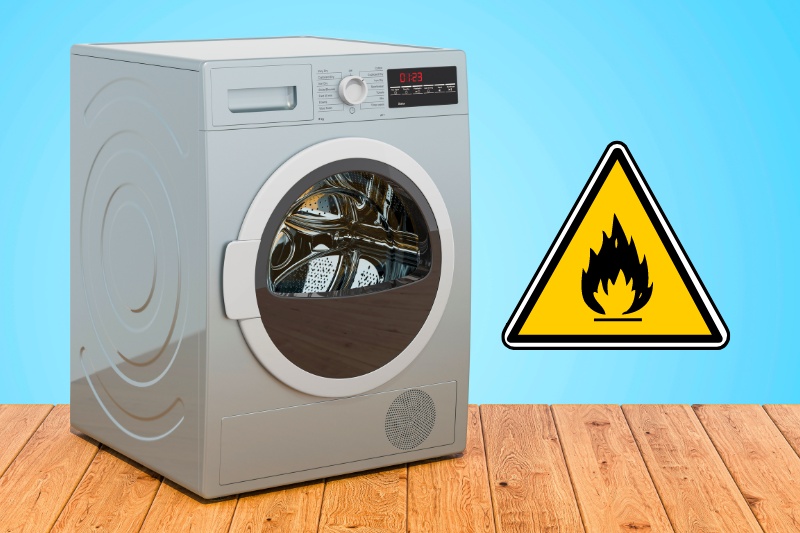
Tumble dryers produce a significant amount of heat and moisture during the drying process. After all, it is the high temperatures and the ability of the dryer to extract moisture from your garments that make them effective at drying clothes.
Vent hoses allow steam (heat and moisture) to escape outside. Without a vent hose to properly exhaust this heat and humidity, it can accumulate and create a potential fire hazard.
In fact, proper ventilation is critical in preventing your dryer from overheating and catching fire, and problems with the vent pipe are one of the main causes of fires in dryers and washing machines.
A properly installed vent pipe also extracts lint from the dryer, reducing the risk of lint buildup in the exhaust system.
Lint is highly flammable and poses a fire hazard. Adequate ventilation and proper venting through the vent pipe help minimise this risk.
Reason 2: Increased humidity and mould growth
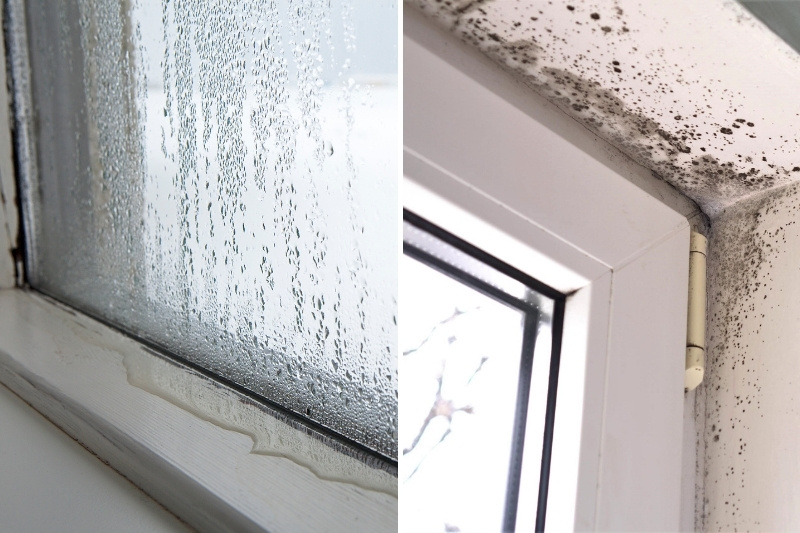
Without a vent pipe attached to your tumble dryer, the moisture extracted from your garments is released into the surrounding room.
This can cause increased humidity in indoor spaces. In turn, high humidity can cause mould growth as the moisture condenses on walls, ceilings, and surfaces.
Mould is bad news for several reasons. Firstly, it can deteriorate and damage building materials like wood, drywall, and insulation.
Over time, this can weaken the structure of your home and result in costly repairs. To make things worse, mould also often produces a musty odour that can permeate your home and make it an unpleasant place to live.
The presence of mould and mildew in your living space also acts as a significant health risk:
- Respiratory issues and allergies: Mould spores can become airborne and be inhaled, potentially leading to respiratory problems such as coughing, wheezing, throat irritation, nasal congestion, and asthma. People with allergies may experience worsened allergic reactions.
- Sinus infections and upper respiratory tract infections: Prolonged mould exposure can cause sinus infections and respiratory tract infections like bronchitis, especially in individuals with pre-existing health conditions.
- Systemic health effects: Some studies suggest a potential link between exposure to indoor mould and systemic health effects, including lung infections and other severe health issues in susceptible individuals with weakened immune systems.
Reason 3: High levels of carbon monoxide
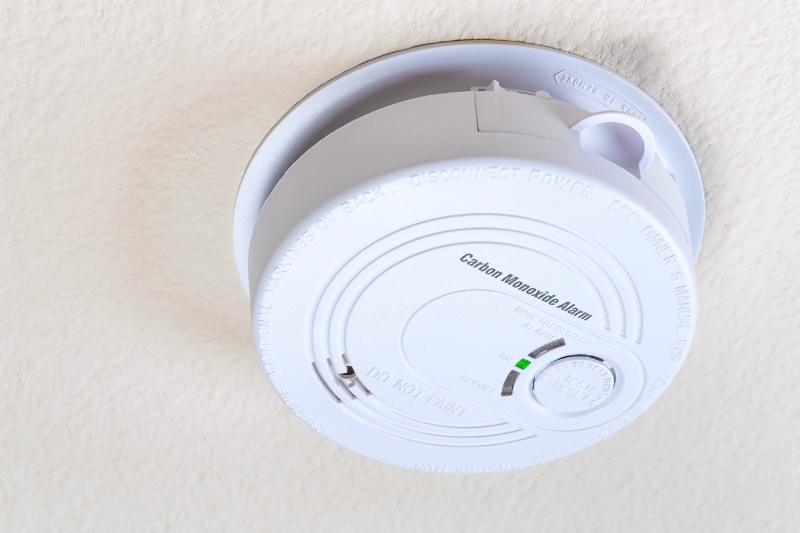
Dryers usually run on electricity, but occasionally they use natural gas instead. If a dryer is powered by natural gas, incomplete combustion can occur, potentially producing carbon monoxide (CO).
Elevated levels of carbon monoxide in the home can pose a significant health risk, as it is a colourless, odourless gas that can cause headaches, dizziness, nausea, and, in extreme cases, even death.
Usually, the production of carbon monoxide from dryers is not a problem. The vent hose in your dryer extracts carbon monoxide and other byproducts of combustion into the outside air, preventing the accumulation of these dangerous gases inside the home. However, if you run your dryer without a vent hose, these gases build up in your house.
It’s essential to ensure that your dryer vent pipe is correctly installed, free of any blockages, and maintained regularly.
Additionally, having a carbon monoxide detector in your home is important to alert you if elevated levels of carbon monoxide are detected, providing an added layer of safety.
Reason 4: Not as efficient at drying
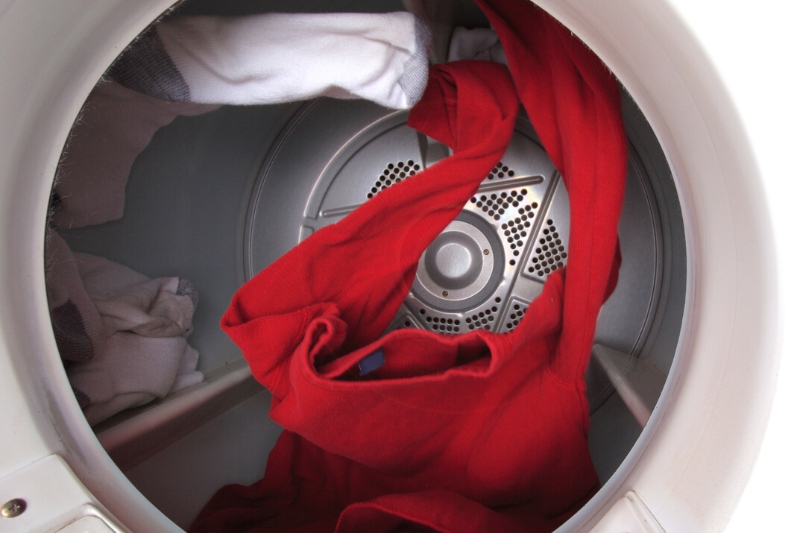
Although not related to health and safety, running a dryer without a vent hose isn’t recommended as it significantly reduces the appliance’s efficiency.
In comparison, proper ventilation with a fully functional vent hose helps the dryer operate more effectively, reducing drying times.
Time is not the only factor impacted here—the efficiency of your tumble dryer also directly impacts laundry costs.
The quicker the dryer dries your clothes, the less time you need to run the appliance and the lower the energy consumption.
This translates to lower costs for running a dryer, which is crucial for anyone looking to lower their household bills.
How Can You Safely Run a Dryer Without a Vent Hose?
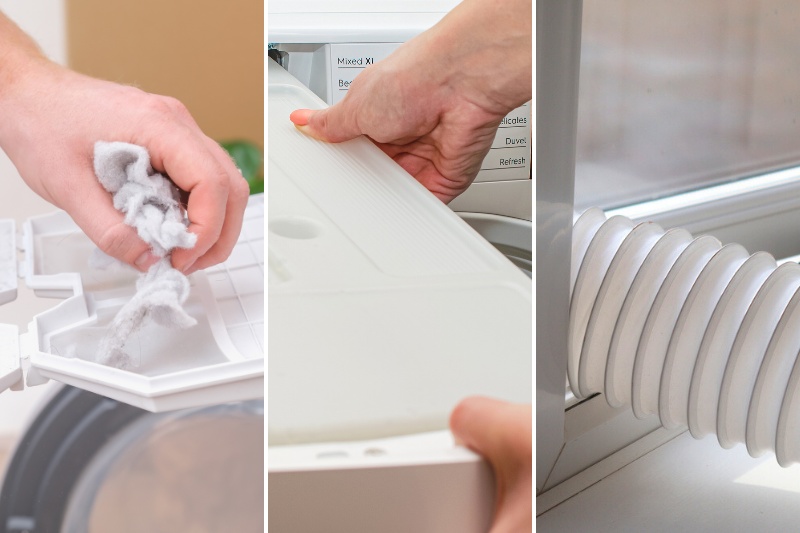
Running a dryer without a vent hose is not recommended because of the related safety risks.
Therefore, we highly recommend you use alternative drying methods if you cannot use a vent hose—for example, air-drying clothes outdoors or using a ventless dryer.
However, if this isn’t an option, here are some tips you can employ when using your vented dryer without a vent hose to reduce the safety risks:
-
- Use a condenser box: A condenser box essentially allows you to convert a vented dryer into a condenser dryer. You connect a hose to your dryer which then collects the moisture in a box which you empty periodically. This can be a good option if you can’t vent your dryer to the outside.
- Proper ventilation: Ensure good airflow and ventilation in the room where you are using your tumble dryer. Use fans or open windows and external doors to help circulate air. This helps to prevent excess moisture buildup and limit the levels of combustion gases accumulating inside your home.
- Attach a temporary bent hose: If possible, vent the dryer to the outdoors through a window using an aluminium hose, such as the Omont Dryer Hose. This can act as a temporary solution for channelling hot air, combustion gases, and lint outside. Attach the hose to your dryer vent to keep the air in your living environment fresh.
- Remove lint regularly: Reducing the build-up of lint inside your tumble dryer is crucial for fire safety. Lint is usually extracted by the vent hose—without one, you must clean the lint traps out after every use. You should also clean the dryer vent and the temporary vent pipe to prevent lint from accumulating here.
These tips can help reduce the risks of running a dryer without a vent hose. But remember, they will not mitigate the risks entirely. If using a traditional vented dryer, it’s best to install a proper vent hose to safely extract the heat, moisture, lint, and gases outside your living space.
Alternatively, why not purchase a new dryer that doesn’t rely on a ventilation system? Many of the best tumble dryers today are condenser dryers that run without a vent hose.

Hannah has a passion for cleaning. She worked her way around Australia by cleaning hostels in exchange for free accommodation and used her cleaning skills to bag a job as a chalet host for a luxury ski company in France.
